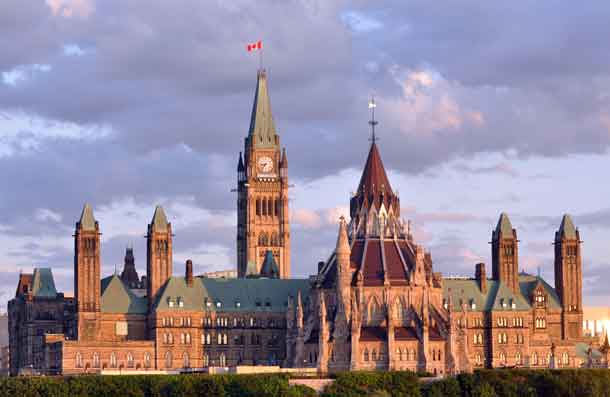CAJ and Land Protectors Protest RCMP Actions
HOUSTON BC – The protests against the Coastal Mountain Pipeline or Trans Mountain Pipeline on Wet’suwet’en unceded territory are continuing Sunday.
Over the past several days, as members of the Royal Canadian Mounted Police have first prepared for what the Wet’suwet’en land protectors as they are calling themselves, to invade their territory, there have been protests across Canada.
Backgrounder from Wet’suwet’en Nation
The Wet’suwet’en nation have lived on and governed their territories for thousands of years. They have never signed treaties or sold their land to Canada. In 1997, Wet’suwet’en Hereditary Chiefs joined with Gitxsan Hereditary Chiefs, and won the landmark Delgamuukw-Gidsaywa Supreme Court of Canada case. The court recognized that the Wet’suwet’en people have never given up title to 22,000 km2 (8500mi2) of land in northern British Columbia – an area the size of New Jersey. The court decision also recognized Wet’suwet’en Hereditary chiefs as the rightful representatives of the Wet’suwet’en title holding collective.
Despite these rulings, the governments of Canada and British Columbia continue to assert jurisdiction over this territory and have issued permits for resource projects without the consent of the Wet’suwet’en Hereditary Chiefs. Wet’suwet’en people upholding decisions made in accordance with Wet’suwet’en law have been criminalized by the Canadian state, and face the risk of arrest for occupying and controlling access to their house territories.
On Wet’suwet’en territory, the RCMP have made their way into several of the camps in the area and advised those in the encampments that they can not stay there.
The Canadian Association of Journalists has expressed their concern over this evolving situation as there are numerous reports of journalists being detained and prevented from covering this story.
“All week the RCMP have been unnecessarily threatening reporters who are simply trying to perform their democratic duties,” said CAJ president Karyn Pugliese.
“Yesterday the RCMP promised to respect media rights, but today they continue to abuse their powers and blatantly disregard the law in a way that is previously unheard of in Canada and unthinkable in a democratic country.”
The CAJ is requesting that reporters in the area continue to document police interference and misuses of power, including noting names and badge numbers and to continue to share the information with the CAJ.
Filmmaker Michael Toledano tweeted: “Today the RCMP are bullying journalists to repress images in real time. As RCMP approach #Unistoten, media here are resolved to do our job and witness police action.”
Jerome Turner, who is covering the dispute for Ricochet media, described to his editor, Ethan Cox, how he had been detained, prevented from bearing witness to events, and filing reports multiple times by the RCMP during the past 24 hours.
“The [RCMP] weren’t going to let me go in the direction of the story,” Turner told Cox.
Arrest totals from RCMP/CGL invasion on unceded Wet’suwet’en territories:
6 arrests @ 39km, Feb 6 (released w/ no charges)
4 arrests @ 44km, Feb 7 (court date Mon, Smithers)
11 arrests @ 27km, Feb 8 (inc. Legal Observers)Map provides context for locations.#WetsuwetenStrong pic.twitter.com/EyO0TJSYNg
— Unist’ot’en Camp (@UnistotenCamp) February 9, 2020
Wet’suwet’en Governance Structure and UNDRIP:
The Wet’suwet’en nation is comprised of five clans (Gilseyhu, Likhts’amisyu, Laksilyu, Tsayu, Gidimt’en), which are further divided into thirteen house groups. Each house group has several distinct territories. Hereditary chiefs are responsible for the health and sustainability of their house group territories, and Wet’suwet’en law protects against trespass or harvest from the house group territories of others. Wet’suwet’en law is enacted through the Bahtlats (feast hall), where decisions are ratified and clan business is conducted. The Wet’suwet’en feast was made illegal for 100 years through the Canadian potlatch ban, effectively criminalizing Wet’suwet’en governance and political systems. Despite this, Wet’suwet’en people have retained their legal traditions and continue to govern themselves in the feast hall in accordance with Wet’suwet’en law.
The UN Declaration on the Rights of Indigenous Peoples (UNDRIP) aligns with Wet’suwet’en law by describing the right of Indigenous peoples to require Free, Prior, and Informed Consent (FPIC) before any development occurs on their traditional territories. Despite BC’s intent to implement UNDRIP, the Province has continued to deny the right of FPIC to Indigenous peoples, and has used police force to support non-consensual development on unceded Indigenous territories.
Pam Palmater Provides Insight
Coastal Gaslink and LNG Canada:
The Wet’suwet’en people, under the governance of their hereditary chiefs, are opposing the largest fracking project in Canadian history. The Coastal Gas Link pipeline (CGL), owned by TC Energy (formerly TransCanada) aims to connect the fracking operations of Northeastern B.C. with a Liquefied Natural Gas (LNG) facility in the coastal town of Kitimat.
This export terminal, called LNG Canada, is owned by a consortium of multinational oil giants (Shell, PetroChina, Petronas, KOGAS, and Mitsubishi). In a previously attempted LNG pipeline (Pacific Trails Pipeline) there was an agreement for the stakeholders to consider transition to bitumen after five years of operation.
CGL is one of many proposed pipelines attempting to cut across the Wet’suwet’en traditional territories. If built, it could expedite the construction of subsequent proposed bitumen and fracked gas pipelines, and create an incentive for gas companies to tap into shale deposits along the pipeline right of way. This project aims to blaze a trail, in what has been envisioned as an energy corridor through some of the only pristine areas left in this entire region. If CGL were to be built and become operational, it would irreversibly transform the ecology and character of Northern B.C. This is why the Wet’suwet’en Hereditary Chiefs have all unanimously opposed the construction of ALL pipelines through their territory, ratifying this numerous times in the bahlats.
Wet’suwet’en Land Re-occupations:
Several Wet’suwet’en clans have re-occupied their traditional territories (outside of the reservations alloted by alloted by Canada), in order to revitalize their culture, traditional harvesting practices, and generations of storytelling embedded in the land. These re-occupations include:
Unist’ot’en Village: Gilseyhu clan, Dark House
Talbits Kwa territory, which belongs to Dark House
Head Hereditary Chief Knedebeas
Spokesperson: Hawilhkat / Freda Huson
Unist’ot’en Village is an Indigenous re-occupation of traditional territory. Over the past 10 years, Dark House members and supporters have built a series of cabins, a permaculture garden, greenhouse, and a Healing Center to support members of the Wet’suwet’en community who are healing from addiction and colonial trauma. Unist’ot’en has implemented a Free Prior and Informed Consent protocol in accordance with UNDRIP and Wet’suwet’en law that requires any visitors to the territory to seek the consent of Dark House Hereditary Chiefs. This protocol was in place until the Coastal Gaslink Pipeline company, with support from the RCMP, forcibly entered the territory without consent to begin work on the Coastal GasLink Pipeline in January 2019. Unist’ot’en village is located 66km along the Morice River West forest service road, across the Morice River (Wedzin Kwah) Bridge. Dark House continues to run healing programs for clients at the Healing Center, despite continued industry destruction and police harassment.
Gidimt’en Access Point: Gidimt’en clan, Cas Yikh (Grizzly) House
Lhudis Bin territory, which belongs to Cas Yikh house
Head Hereditary Chief Woos
Spokesperson: Sleydo / Molly Wickham
In Dec. 2018, in the Witset feast hall, the Gidimt’en clan announced their intention to set up a checkpoint at 44 km along the Morice River forest service road. The checkpoint would serve to protect Cas Yikh territory, as well as Dark House’s neighbouring territory (Talbits Kwa), including the Unist’ot’en Healing Center. The access point includes a number of canvas tents, a yurt, an outdoor kitchen, timber frame cabin, children’s play areas and gathering places. They host cultural events, hunting and berry picking workshops, and provide a space for Wet’suwet’en families, elders and children to access the land for cultural practices. The camp is located beside Ts’el Ka’i’ kwe (Lamprey creek), which is a traditional campsite, fishing site, and gathering place. On January 7, 2019, the camp was violently raided by heavily militarized RCMP in order to enforce Coastal GasLink’s interim injunction and ensure CGL’s access to Dark House territory for pipeline construction. After the raid, CGL demolished a number of camp structures to make room for construction equipment, and the RCMP temporarily occupied the site as a surveillance post until it was reclaimed by Gidimt’en clan members. It continues to operate as a gathering place for Wet’suwet’en people and the revitalization of their culture.
Likhts’amisyu – Parrot Lake Village
The Sovereign Likhts’amisyu Village is an Indigenous reoccupation of a former Wet’suwet’en village site at Parrot Lakes. Since mid-2019, Likhts’amisyu members and supporters have built an outdoor kitchen and a series of log cabins, with the long-term vision of creating an environmentally sustainable community, interpretive trails, building a climate research facility, and protecting sacred sites on unceded Likhts’amisyu territory.
Social Media Updates
On Saturday, during a protest in Regina, Saskatchewan, a driver ran the protest line in their vehicle. Regina Police are investigating.
A car drove through protesters in Saskatchewan ????
???? Via Instagram: blmaksa #Regina #Saskatoon #ShutDownCanada #Wetsuweten #cdnpoli #skpoli #bcpoli pic.twitter.com/FbyYFb61mH— Canadamania (@ItsCanadamania) February 8, 2020
Indigenous Youth for Wet’suwet’en are on their 50th hour of occupation of B.C. Parliament and the 100th hour of occupation of Minister of Northern Affairs office in Winnipeg, Manitoba. We call on Canada to end the terror on Wet’suwet’en lands. pic.twitter.com/VgFaK4MQ12
— Ta’Kaiya Blaney (@salishmemer) February 9, 2020






